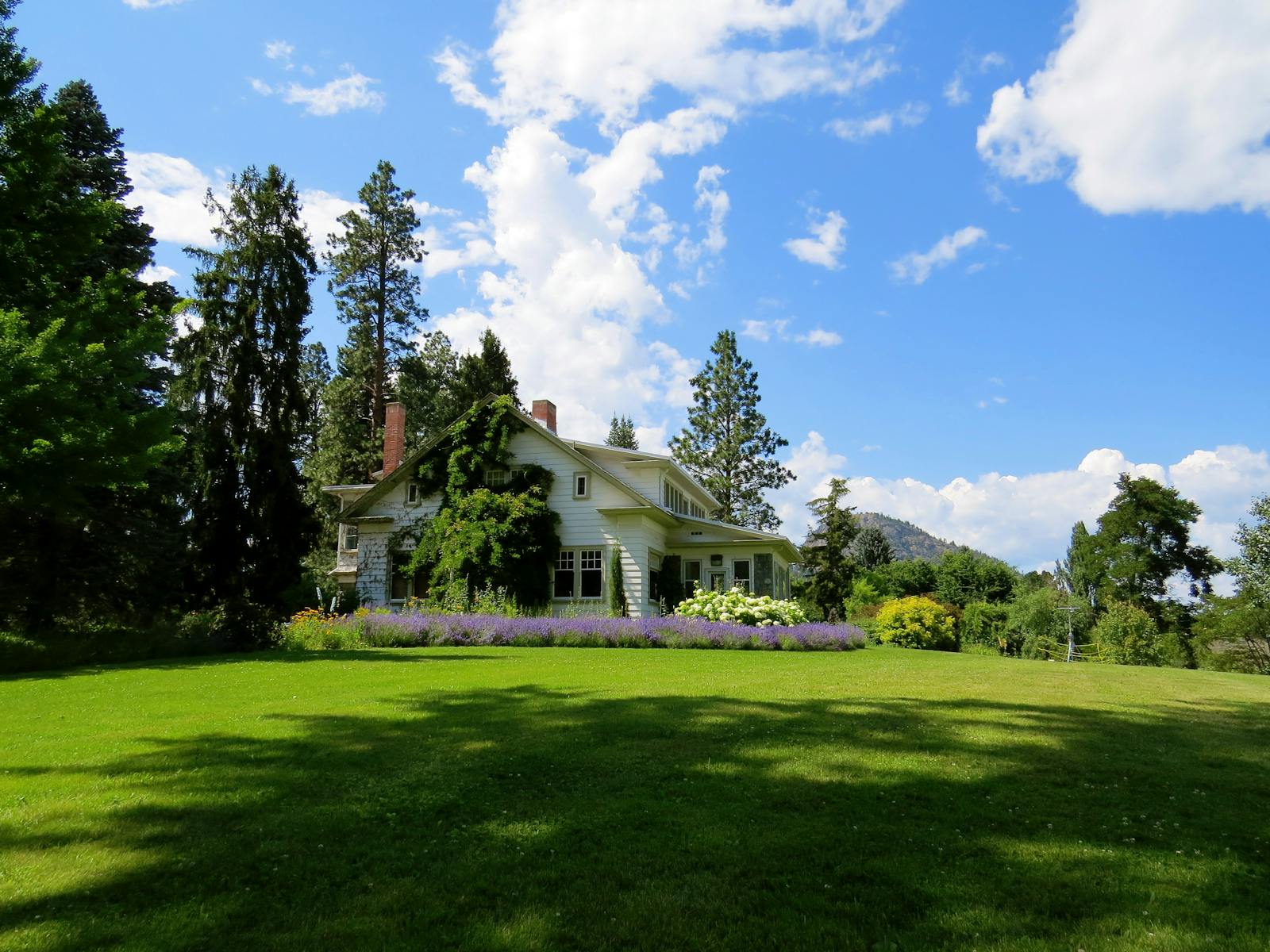The lush, manicured green lawn is a staple of American suburbia and a symbol of homeownership across the country. For many Americans, maintaining a perfect lawn is more than just a chore—it’s a point of pride, a status symbol, and even a cultural expectation. But where did this obsession come from, and why does it continue to hold such a strong place in American life? This article delves into the historical origins, cultural significance, economic factors, and environmental considerations that contribute to the American love affair with green lawns.
Historical Origins: The Birth of the American Lawn
The American obsession with green lawns has roots in European aristocracy. The concept of a manicured lawn originated in 17th-century England and France, where wealthy landowners cultivated expansive, well-maintained grass lawns around their estates. These lawns were a symbol of wealth and status, as they required significant resources to maintain in an era before modern lawn care equipment.
In the 18th and 19th centuries, as the idea of the lawn made its way across the Atlantic, American elites began to adopt this feature in their own landscapes. Thomas Jefferson, for example, included a large, European-style lawn at Monticello, his Virginia estate. The idea of the lawn as a status symbol began to take hold in America, eventually trickling down from the wealthy to the middle class.
The Influence of Landscape Design
The aesthetic appeal of lawns was further cemented by the landscape design movement of the 19th century, led by figures like Frederick Law Olmsted. Known as the father of American landscape architecture, Olmsted designed prominent public parks, including Central Park in New York City, which featured large expanses of greenery. This public exposure to manicured lawns helped to popularize the concept among the general population, reinforcing the idea that lawns were both desirable and attainable.
The Suburban Boom and the Rise of the Lawn
The widespread popularity of the green lawn in America can be traced back to the post-World War II suburban boom. As millions of returning soldiers sought homes, developers began building mass-produced suburban neighborhoods characterized by single-family homes with green front lawns. These developments, such as the famous Levittown, standardized the inclusion of lawns as an integral part of suburban living.
The Federal Housing Administration (FHA) and Veterans Administration (VA) promoted homeownership in these new suburbs, often requiring that homes include well-maintained lawns as part of the community’s aesthetic. The lawn became synonymous with the American Dream—a symbol of stability, prosperity, and the ideal family life.
The Role of Media and Entertainment
During this era, the portrayal of suburban life in media and entertainment further solidified the green lawn’s status. Television shows and advertisements frequently depicted families enjoying leisure time on their well-manicured lawns. This imagery perpetuated the notion that a pristine lawn was an essential backdrop for family life and social gatherings, ingraining it even deeper into American culture.
Cultural Significance: The Lawn as a Status Symbol
In American culture, the well-manicured lawn is more than just an aesthetic choice; it’s a reflection of social status and personal responsibility. The pristine green lawn represents a homeowner’s care for their property and adherence to societal expectations. A well-maintained lawn signals that the homeowner is responsible, respectable, and in tune with the values of their community.
The Psychology of Lawn Care
The psychology behind lawn care is intriguing. Psychologists suggest that maintaining a perfect lawn can fulfill an innate human desire for order and control. A uniform lawn creates a sense of harmony and predictability, which can be comforting in the face of life’s uncertainties. This psychological aspect adds another layer to the cultural significance of lawns in America.
Neighborhood norms also play a significant role in the lawn obsession. In many suburban areas, homeowners’ associations (HOAs) enforce strict rules regarding lawn maintenance. These rules dictate everything from grass height to acceptable lawn colors, reinforcing the idea that a green, uniform lawn is essential for maintaining property values and community standards.
The Role of Marketing and the Lawn Care Industry
The lawn care industry has played a significant role in perpetuating the American obsession with green lawns. Companies like Scotts and John Deere have marketed the idea that a green lawn is a source of pride and a reflection of one’s success. Over the decades, advertising campaigns have convinced Americans that achieving a perfect lawn requires specific products—fertilizers, herbicides, pesticides, and lawnmowers.
The Evolution of Lawn Care Products
Lawn care products have evolved significantly over the years. From the introduction of chemical fertilizers in the mid-20th century to today’s organic and environmentally friendly options, the industry has adapted to changing consumer preferences. This evolution reflects a growing awareness of environmental issues, prompting some homeowners to seek out less harmful alternatives.
The availability of these products, combined with effective marketing, made lawn care more accessible and appealing to the average homeowner. Maintaining a lush green lawn became a hobby for many, with weekends devoted to mowing, watering, and fertilizing. The lawn care industry, now worth billions of dollars, continues to drive the cultural narrative that a green lawn is a vital part of the American lifestyle.
Environmental and Social Considerations
Despite its cultural significance, the American obsession with green lawns comes with significant environmental costs. Lawns are resource-intensive, requiring vast amounts of water, chemical fertilizers, and pesticides. In many regions, maintaining a green lawn year-round is unsustainable due to water scarcity.
Water Usage and Conservation
Water usage is one of the most pressing concerns associated with lawn maintenance. The Environmental Protection Agency (EPA) estimates that landscape irrigation accounts for nearly one-third of all residential water use in the United States. In drought-prone areas, this can lead to water shortages and increased competition for resources.
The environmental impact of lawn care includes water pollution from runoff, habitat destruction, and the contribution to greenhouse gas emissions through the use of gasoline-powered lawn equipment. Moreover, the uniformity of lawns contributes to a lack of biodiversity. Monoculture lawns, which consist of a single type of grass, do not support diverse ecosystems. Native plants, which are often better suited to the local environment and require less maintenance, are often overlooked in favor of the traditional green lawn.
Alternatives to Traditional Lawns
There is a growing movement among environmentally conscious homeowners to replace traditional lawns with more sustainable alternatives, such as xeriscaping (landscaping with drought-resistant plants), wildflower gardens, or native plant gardens. These alternatives reduce water usage, support local wildlife, and require less maintenance than traditional lawns.
Case Study: Xeriscaping in the Southwest
In the arid Southwest, xeriscaping has gained popularity as a practical solution to water scarcity. This landscaping approach emphasizes the use of native plants that thrive in dry conditions, such as succulents and cacti. Homeowners in cities like Phoenix and Las Vegas have embraced xeriscaping to create beautiful, low-maintenance landscapes that conserve water and enhance local biodiversity.
The Social Pressures of Lawn Maintenance
The pressure to maintain a green lawn is reinforced by social norms and community expectations. Homeowners often feel compelled to conform to neighborhood standards, fearing that a less-than-perfect lawn could lead to judgment or even conflict with neighbors. This pressure is amplified in communities with strict homeowners’ associations, where fines or penalties can be imposed for failing to meet lawn care standards.
Navigating HOA Regulations
For homeowners living in communities governed by HOAs, understanding and navigating lawn care regulations can be a challenge. It’s essential to review the community’s bylaws and communicate with HOA boards to ensure compliance while exploring options for more sustainable landscaping practices. Engaging in dialogue about the benefits of alternative landscaping can also help shift community norms over time.
For many, the lawn becomes a measure of personal success. A green, weed-free lawn is often seen as a sign of diligence, hard work, and pride in one’s property. Conversely, a neglected or overgrown lawn can be viewed as a sign of laziness or irresponsibility, leading to social stigma.
The Lawn as a Symbol of the American Dream
At its core, the green lawn is a powerful symbol of the American Dream. It represents not just homeownership, but the idea of having “made it” in life. The lawn is a space for family gatherings, children’s play, and outdoor relaxation—a personal slice of nature that embodies the ideal of suburban living.
Cultural Shifts and Changing Perceptions
As cultural values evolve, perceptions of the American Dream and its symbols are also changing. Younger generations are increasingly prioritizing sustainability and environmental responsibility over traditional markers of success. This shift has prompted some homeowners to reconsider the necessity of a traditional lawn, exploring alternatives that align with their values.
The appeal of the lawn lies in its promise of order, control, and the fulfillment of a vision of success that has been passed down for generations. Even as environmental concerns grow and alternative landscaping options gain popularity, the green lawn remains deeply embedded in the American psyche. For many, it is a non-negotiable feature of their home, tied to their identity and aspirations.
Embracing Change: A Path Forward
While the traditional green lawn continues to hold a place of prominence in American culture, the future may see a more diverse landscape of yard aesthetics. As awareness of environmental issues increases, homeowners are likely to adopt a more balanced approach to landscaping that combines the aesthetic appeal of lawns with sustainable practices.
The American obsession with green lawns is the product of historical trends, cultural values, economic forces, and social pressures. From its origins in European aristocracy to its rise as a symbol of post-war prosperity, the lawn has evolved into an enduring emblem of the American Dream. While the environmental costs and social pressures associated with lawn maintenance are increasingly being questioned, the allure of the lush, uniform green lawn remains strong. For better or worse, the green lawn continues to hold a place of prominence in American culture, representing not just a well-maintained home, but the ideals of success, order, and belonging. As landscaping trends evolve, it will be interesting to see whether the traditional lawn remains dominant or gives way to more sustainable, diverse, and environmentally friendly alternatives.




